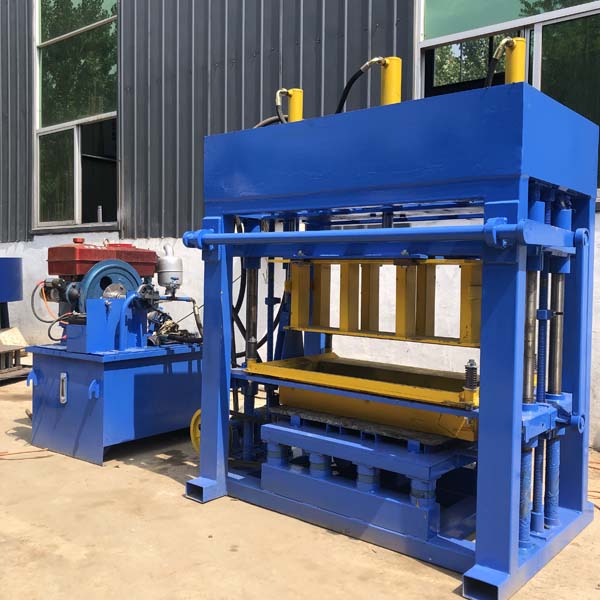
The construction industry is one of the largest consumers of natural resources and energy, with brick manufacturing being a significant contributor to its environmental impact.
Traditional brick manufacturing processes often involve the extraction of clay from natural reserves, high energy consumption during firing, and waste generation.
However, in recent years, sustainable brick manufacturing equipment has emerged as an eco-friendly solution to mitigate the environmental impact of brick production.
This essay delves into the significance of sustainable brick manufacturing equipment, the key features that make them eco-friendly, and their impact on the construction industry.
The Environmental Impact of Traditional Brick Manufacturing
Traditional brick manufacturing processes have considerable environmental consequences.
Firstly, the extraction of raw materials, such as clay, from natural reserves leads to soil degradation and habitat destruction.
The depletion of these finite resources poses a threat to local ecosystems and biodiversity.
Secondly, the energy-intensive firing process in traditional brick kilns releases greenhouse gases, primarily carbon dioxide (CO2), into the atmosphere.
These emissions contribute to global warming and climate change.
Furthermore, brick manufacturing generates waste in the form of rejected or broken bricks, kiln ash, and other by-products.
Improper disposal of this waste can lead to environmental pollution and resource depletion.
Key Features of Sustainable Brick Manufacturing Equipment
Sustainable brick manufacturing equipment incorporates innovative features that make them eco-friendly solutions for the construction industry. Some key features are:
Utilization of Alternative Materials: Sustainable brick manufacturing equipment is designed to use alternative raw materials, such as recycled aggregates, industrial by-products (e.g., fly ash or slag), and construction and demolition waste.
By utilizing these materials, manufacturers reduce their dependence on natural resources and promote waste recycling.
Energy-Efficient Kiln Technology: Advanced sustainable brick manufacturing equipment employs energy-efficient kiln technologies, such as tunnel kilns and hybrid firing methods.
These kilns optimize heat distribution and reduce energy consumption during the firing process, resulting in lower CO2 emissions.
Low Carbon Footprint: The incorporation of energy-saving measures and alternative materials in the brick manufacturing process significantly reduces the carbon footprint of brick production.
This contributes to the industry’s efforts to combat climate change and promote sustainable practices.
Waste Reduction and Recycling: Sustainable brick manufacturing equipment is designed to minimize waste generation and maximize the recycling of by-products.
For instance, some machines are equipped with waste heat recovery systems to harness energy from kiln exhaust gases.
Impact on the Construction Industry
The adoption of sustainable brick manufacturing equipment has brought about a positive impact on the construction industry.
Firstly, by utilizing alternative materials, manufacturers can reduce the demand for virgin resources, conserving natural reserves and preserving the environment.
This resource efficiency aligns with the principles of circular economy and sustainable development.
Secondly, the reduction in energy consumption during firing translates to cost savings for brick manufacturers.
Additionally, the lower carbon emissions from sustainable brick production contribute to the construction industry’s efforts to achieve net-zero carbon emissions and comply with environmental regulations.
Moreover, the incorporation of waste reduction and recycling practices not only minimizes landfill waste but also promotes the circularity of materials.
By transforming waste into valuable resources, sustainable brick manufacturing equipment supports a more resource-efficient and eco-friendly construction industry.
Challenges and Future Prospects
Despite the numerous benefits, the widespread adoption of sustainable brick manufacturing equipment faces some challenges.
The initial investment cost of advanced eco-friendly machinery may be higher than traditional equipment. However, the long-term cost savings in energy and raw material consumption often outweigh the initial expenses.
Looking ahead, the future prospects of sustainable brick manufacturing equipment are promising.
Continued research and development in material science, energy-efficient technologies, and automation are likely to further enhance the eco-friendliness and efficiency of these machines.
Furthermore, the implementation of government policies and incentives supporting sustainable construction practices could encourage more brick manufacturers to invest in eco-friendly equipment.
Collaborative efforts among stakeholders, including manufacturers, policymakers, and consumers, are essential to promote the adoption of sustainable brick manufacturing equipment.
Sustainable brick manufacturing equipment presents an eco-friendly solution to mitigate the environmental impact of brick production.
By utilizing alternative materials, optimizing energy consumption, and promoting waste reduction and recycling, these machines contribute to the construction industry’s transition toward sustainable practices.
The adoption of sustainable brick manufacturing equipment not only conserves natural resources and reduces greenhouse gas emissions but also brings cost savings and resilience to the brick manufacturing sector.
Embracing these eco-friendly solutions, the construction industry can pave the way for a more sustainable and environmentally conscious future, one brick at a time.
